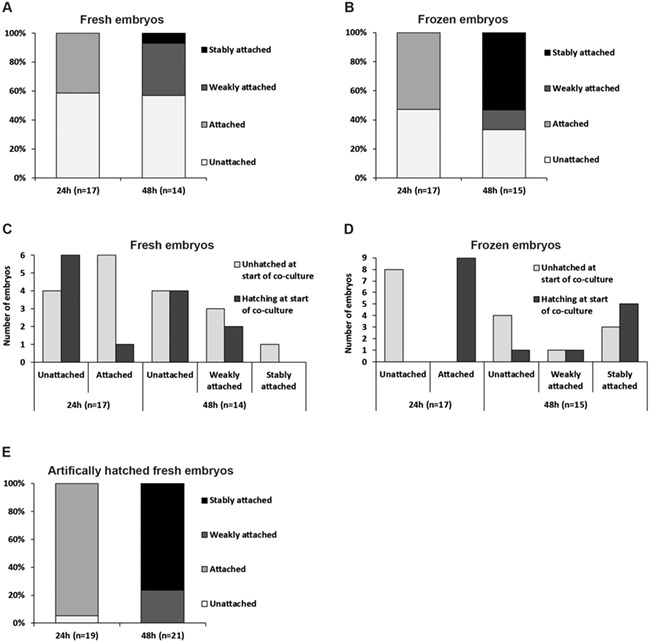Figure 3.

Attachment of day 6 human blastocysts to Ishikawa cells. (A) Day 6 human blastocysts from current IVF cycles (fresh) were co-cultured with Ishikawa cells for 48 h and attachment (attached or not attached) was assessed after 24 h. At 48 h, co-cultures were fixed with paraformaldehyde (PFA) and blastocysts that remained attached after fixation were scored as stably attached, whereas those, which became detached during fixation, were scored as weakly attached. Two co-cultures were fixed after 24 h to assess attachment stage (data not reported here). (B) Day 6 human blastocysts developed from frozen embryos were co-cultured with Ishikawa cells for 48 h. Attachment was assessed at 24 h (attached or not attached), and at 48 h, co-cultures were fixed with PFA. Blastocysts that remained attached after fixation were scored as stably attached, whereas those that became detached during fixation were scored as weakly attached. Two co-cultures were fixed after 24 h to assess attachment stage (data not reported here). (C) Representation of fresh blastocyst attachment data comparing embryos graded as unhatched or hatching at the start of co-culture. (D) Representation of frozen blastocyst attachment data comparing embryos graded as unhatched or hatching at the start of co-culture. (E) Day 6 human blastocysts from current IVF cycles (fresh) were artificially hatched from the zona pellucida using acid Tyrode’s solution prior to co-culture with Ishikawa for 48 h. Attachment was assessed after 24 h (attached or not attached). At 48 h, co-cultures were fixed with PFA and blastocysts that remained attached after fixation were scored as stably attached, whereas those that became detached during fixation were scored as weakly attached. Attachment of two co-cultures was not assessed at 24 h.
